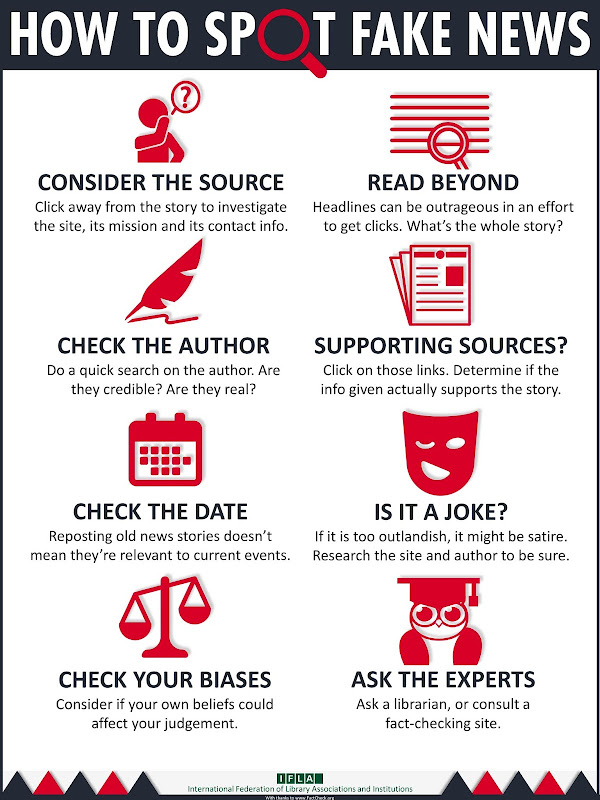Reminders: Identifying, Selecting & Working With Sources
THE INFORMATION LIFECYCLE:
The Information Lifecycle helps us understand how information about an event, topic or idea might emerge and evolve over time.

PRIMARY & SECONDARY SOURCES:
A primary source is a first-hand witness to a historical event or period (that is, it was originally created at that point in history). Primary sources offer a first-hand perspective which is untouched by hindsight, subsequent events, or modern knowledge. They provide insights about the actions, motivations and emotions involved in a historical period, and allow us to understand history as it was experienced at the time rather than as we analyze it today.
Unlike with secondary sources, the value of primary sources lies in their proximity to the event rather than a particular publication venue and/or authority (though this can also play a role in your interpretation of the source). For this reason, primary sources may include a combination of scholarly, popular, unpublished, and other kinds of sources.
Secondary sources are second-hand witnesses -- they provide descriptions and/or analysis of historical events and documents after the fact. Secondary sources usually draw their information from primary sources, but add a layer of interpretation, and often rely upon the kind of understanding of historical periods and/or events that only becomes clear sometime later. 
| PRIMARY | SECONDARY | |
|---|---|---|
| author | A first-hand witness to a historical event or period | A second-hand witness who interprets first-hand information using later understanding of events |
| date | Typically, but not always, published in or near the relevant time period or event. Exceptions can include memoirs or compilations, translations, etc. published at a later date. | Typically removed in time from the relevant period/event |
| original purpose | Varies widely. Typically not intentionally created for sake of history or research. | Varies; usually, to convey information or analysis |
| research use |
Offers first-hand perspectives untouched by hindsight or modern knowledge |
Offers descriptions, and/or analysis of historical events after the fact; may also offer synthesis of first-hand information. |
| publication format | Varies; can include nearly anything from an object to a scholarly article [if from the appropriate period] | Typically "published" sources -- books, journal articles, magazines/newspapers |
| examples | NYT article from April 1912 [Titanic], 1963 book on the USSR [Cold War], George Washington's collected papers [Colonial America/Revolution] | American Historical Review; current NYT articles; a book published in 2018 |
Some questions that might help when...
EXAMINING A SOURCE
WHO...
 Who is the author?
Who is the author?
 How is the author qualified?
How is the author qualified?
 Is the author an expert?
Is the author an expert?
 What is the author's bias? (Remember that a bias may not be directly stated -- but there is almost always some bias!))
What is the author's bias? (Remember that a bias may not be directly stated -- but there is almost always some bias!))
WHAT...
 What is the source? Is it a research report? An entertainment piece? An opinion essay?
What is the source? Is it a research report? An entertainment piece? An opinion essay?
 What does this tell you about the source's audience, purpose, and potential bias(es) or shortcoming(s)?
What does this tell you about the source's audience, purpose, and potential bias(es) or shortcoming(s)?
WHEN...
 Is the source recent (or, if digital, regularly updated)? When was it published?
Is the source recent (or, if digital, regularly updated)? When was it published?
 Is there any information which seems out-of-date?
Is there any information which seems out-of-date?
WHERE...
 Who hosts the site? OR Who publishes this resource?
Who hosts the site? OR Who publishes this resource?
 Does the host/publisher have bias? (Remember that a bias may not be directly stated.)
Does the host/publisher have bias? (Remember that a bias may not be directly stated.)
 What is the domain extension?
What is the domain extension?
The publisher and/or domain can help you determine a website's origin. For example, .gov is the domain for United States government sites and .edu is for US Educational institutions. Note that not all .com sites are unreliable and not all .org sites are reputable -- .org simply means that the website is for a non-profit group.
WHY...
 What is the purpose and audience of the source?
What is the purpose and audience of the source?
 What is the benefit, and/or who benefits, if this source reaches and/or successfully convinces readers?
What is the benefit, and/or who benefits, if this source reaches and/or successfully convinces readers?
HOW...
 By what means was this source created?
By what means was this source created?
 Does the resource provide its sources?
Does the resource provide its sources?
 Does it refer/link you to other credible sources?
Does it refer/link you to other credible sources?
 Can you determine whether the information came from, and whether the original source/info is represented accurately?
Can you determine whether the information came from, and whether the original source/info is represented accurately?
LATERAL READING:
Lateral Reading is a more nuanced technique of evaluating websites and other kinds of sources.
While the checklist on the previous tab is a great place to start, sometimes you can't answer those questions completely -- or, sometimes, they don't give a complete picture of the information you are looking at.
The video below explains what lateral reading is, why it's important, and how to do it.
FACT CHECK:
We've all heard the term "Fake News" -- even when information isn't blatantly or deliberately false, it's still a good idea to check the facts (see the video on Lateral Reading for more).
Not sure where to look? The page below offers some helpful resources for checking 'fact's of all kinds, from data to images:
-
11 Non-Partisan Fact-Checking WebsitesCompiled by J. Greller, "A Media Specialist's Guide to the Internet" [blog], Aug 31, 2020


